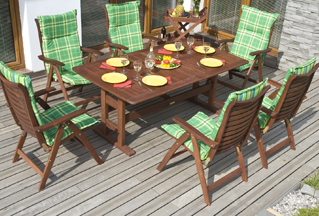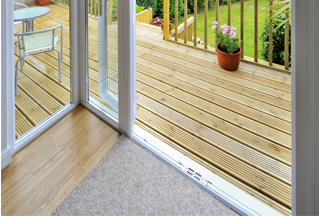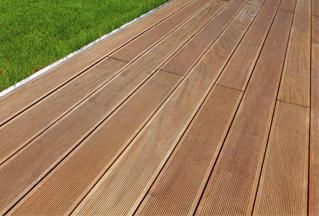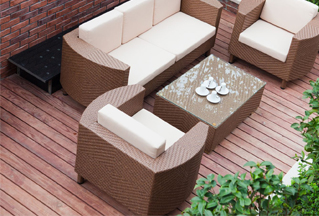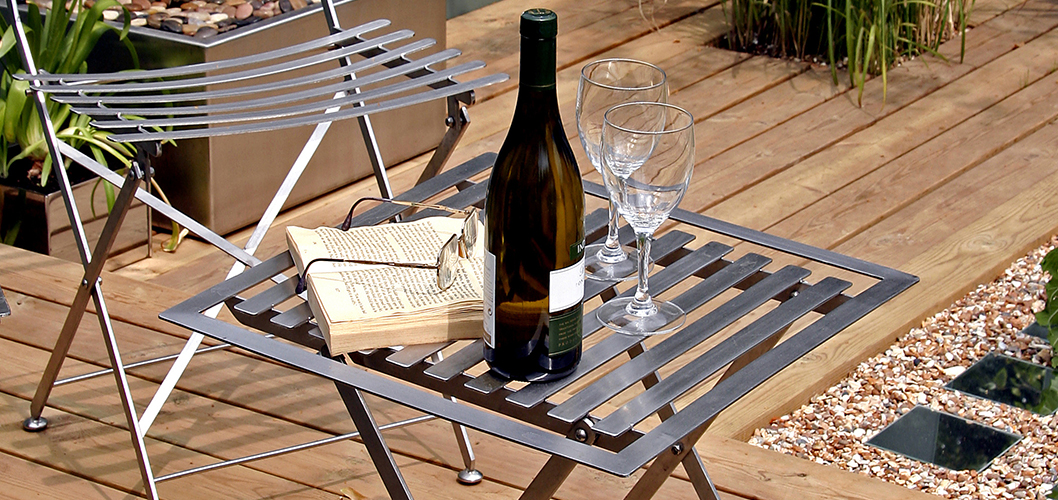
If you’re looking to build a completely new deck or you’re simply replacing old decking with modern alternatives, it is important that you follow the best advice. Even if you are experienced in DIY, this project can still be fairly difficult to complete to a high standard.
The difficulty of the project will largely depend on the type of terrain you are building on as well as the position of your new external space related to your existing flooring. For example, it can be easy to line up your decking boards if you are simply expanding on an existing ground level, but a raised deck can often feature a range of different problems.
Planning is a hugely important part of any DIY project. If you approach any project without a clear and detailed plan in mind, it is likely that you’re going to end up causing more problems than those you solve.
1. Make A Rough Sketch – You need to make sure you know where your decking will extend to; creating a rough sketch can be a great way of finding your ideal deck size. It can also be a useful idea to lay out battens to the edge of your ideal length, to make sure you fully understand where it will extend to.
2. Draw A More Detailed Plan – Once you’ve decided on the size of your new deck, make a more detailed sketch which includes access points, stairways, and any other relevant features which you need to consider. It’s also important to make sure you aren’t blocking off any access hatches, cut-outs of air bricks.
3. Find The Right Height – You need to make sure that the top level of the decking which is attached to you house is at least 150mm below the damp proof course. That way, you can make sure that you are still complying with building regulations which will not only improve the longevity of your home, but can make it much easier when it comes to resale.
4. Work Out The Decking Boards – From your detailed plan, make sure that you calculate the area of your decking in square metres. That will help you to work out how many decking boards you’re going to need which can make sure that you buy the right amount of packs from the start.
5. Work Out How Many Posts/Rails You Need – By understanding how large your deck is going to be, you can understand how many posts and rails you need to create a structurally secure deck.
6. Clear The Area – You need to get rid of anything which might block the area off. That includes turf and vegetation. Then, you need to make sure that ground underneath is firmly and tightly-packed to stop the deck from shifting during installation.
7. Deck Fabric – By laying decking fabric across the ground, you can prevent weeds from growing up and through the decking. For the best results, make sure that you peg or weigh the fabric down.
8. Choose A Concrete Base – Ideally, your deck’s framework should be laid out on concrete. If you are working with a dirt base, then concrete paving slabs are a great option.
9. Create The Outer Frame – Firstly, you need to lay the outer frame of your decking with wooden joists. These should rest on the concrete slabs we talked about a second ago. You should join these joists together with rust-proof screws and wood-glue. If you are attaching the decking to your wall, make sure that you screw the joists into the wall. However, you need to make sure that the decking is already starting to slope away from the house slightly.
10. Introduce The Interior Joists – You need to fill the framework with long joists, spaced at the width of your deck boards. Make sure that these are also screwed to the frame. You should also introduce short lengths between these joists to ensure that the framework is durable and likely to remain structurally stable.
11. Lay Decking Boards – Once all the joists are in place, you can start to lay your decking boards. Ideally, you should lay six boards at a time, and leave a space between them of around 5mm. This means that your boards have room to swell in the cold weather or rain. Affix them using rust-free, stainless steel screws for long-lasting reliability.
Remember to fix the ends of each board first, before attaching the centre of the board to every joist in between.
Here at Challenge Fencing, we can provide a full range of decking supplies, including a variety of decking boards. All of our supplies are made from the most reliable materials and will provide many years of reliable service.
To order your decking board shop online with Challenge Fencing. If you need any additional information or advice, don’t hesitate to get in touch with your local branch of Challenge Fencing experts.

